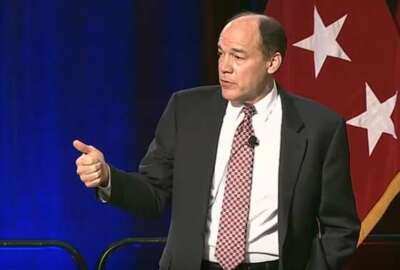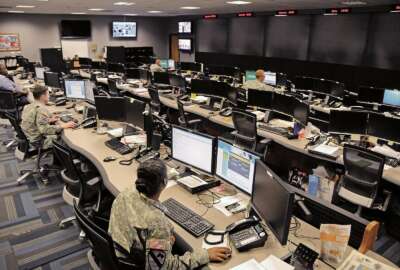Army looking at the implications of cyber and space on a small scale
Tabletop wargames and big military exercises usually focus on more high-level leadership and strategy, but in the potentially degraded environments of the future...
Tabletop wargames and big military exercises usually focus on more high-level leadership and strategy, but in the potentially degraded environments of the future, squad leaders and lower level commanders will be the ones calling the shots.
The Army Futures Command’s Maneuver Battle Lab is creating a space for experimentation at the brigade combat team level and below, creating ways for small groups of soldiers and even individuals to experiment through modeling, simulation and field experimentation.
The Army feels like it has a handle on traditional domains like land, sea and air, but when soldiers are operating in multiple domains or in areas like cyber and space, the service wants more practice.
“What we’ve been working on the last two or three years is improving our capability to conduct what we call nonlethal simulation of nonlethal effects inside simulation,” said Chris Willis, deputy director of the Maneuver Battle Lab, based in Ft. Benning, Georgia. “We are looking at what is the effect on those smaller formations and those maneuver combat formations as opposed to the larger Army formations and how do we fight in those domains at that larger echelon?”
The 80,000-square-foot facility most recent conducted exercises this summer using government off-the-shelf tools developed by partners across the joint force.
“During the Quick Look VI experiment, the Maneuver Battle Lab used electronic warfare modeling tools and live military role players from Forces Command to enhance concept writers’ understanding of conflict against a peer threat across multiple domains at the brigade combat team level,” an Army release states.
Quick Look VI was a week-long simulation with 21 soldiers using electronic warfare capabilities against a near-peer threat.
The lab did a second experiment in August, which focused on the use of electromagnetic spectrum and cyber in a single battalion.
“This particular experiment built upon the lessons learned in Quick Look VI Table Top Experiment, but employed additional solutions to model non-kinetic effects. The cyber and electronic warfare models used allowed analysts and military role players to better understand the impacts of non-kinetic effects on military operations,” the Army wrote.
Willis said the Army is trying to understand the best investment for each of its capabilities and the ones that are already fielded.
He added that the Army wants to focus on improving its systems and teams through the experiments.
“This has been an intuitive iterative process,” Willis said. “We’re focused on cyber for others. So as a layman, as an armor soldier, as a cavalryman, how do I train those soldiers for this? How do I inject cyber effects inside experimentation to understand how it affects those maneuver soldiers? That’s really the way forward.”
Copyright © 2025 Federal News Network. All rights reserved. This website is not intended for users located within the European Economic Area.
Scott Maucione is a defense reporter for Federal News Network and reports on human capital, workforce and the Defense Department at-large.
Follow @smaucioneWFED






